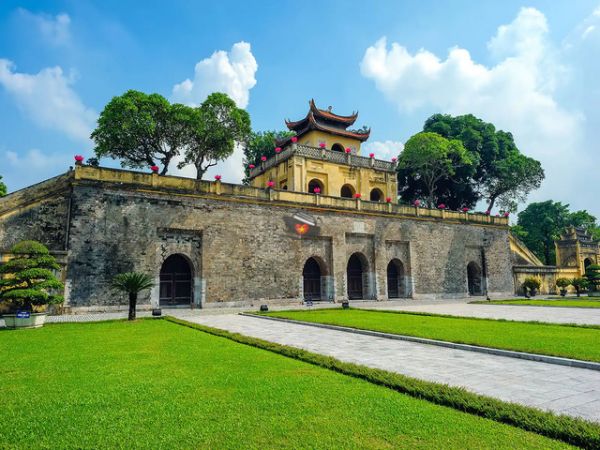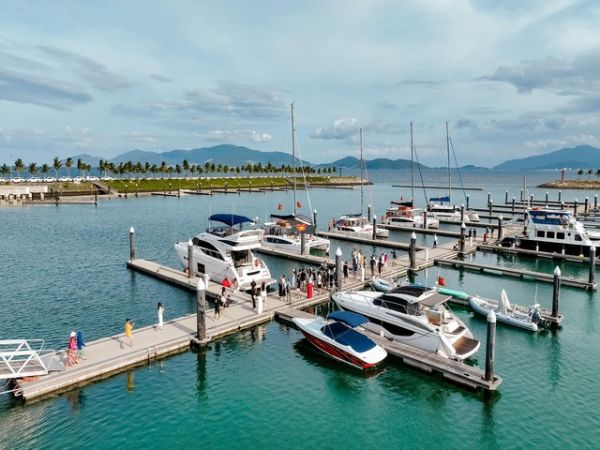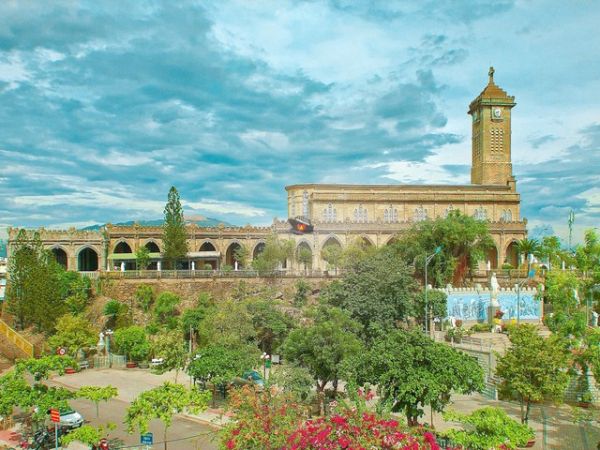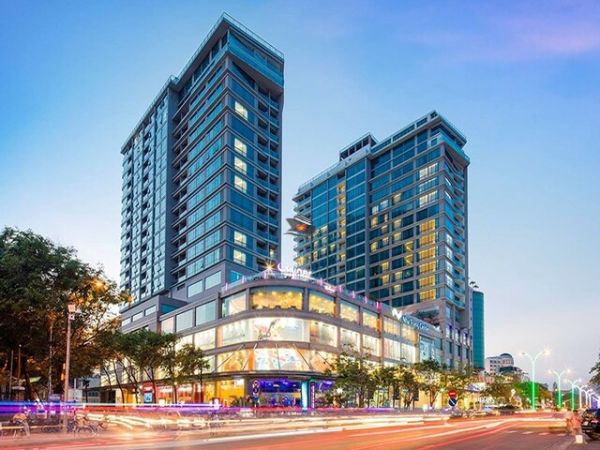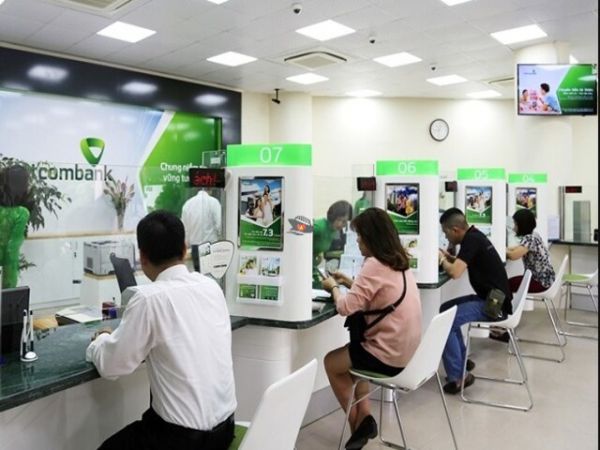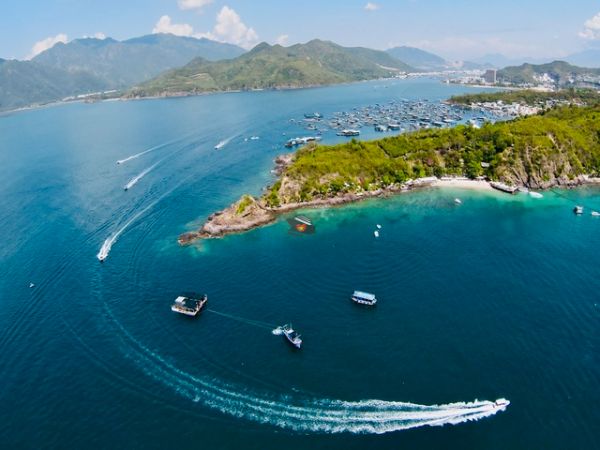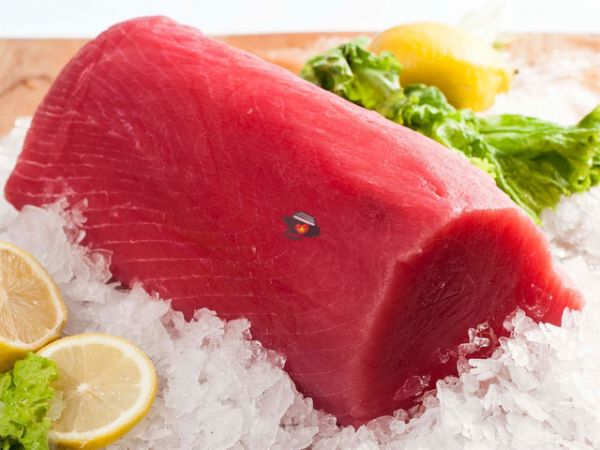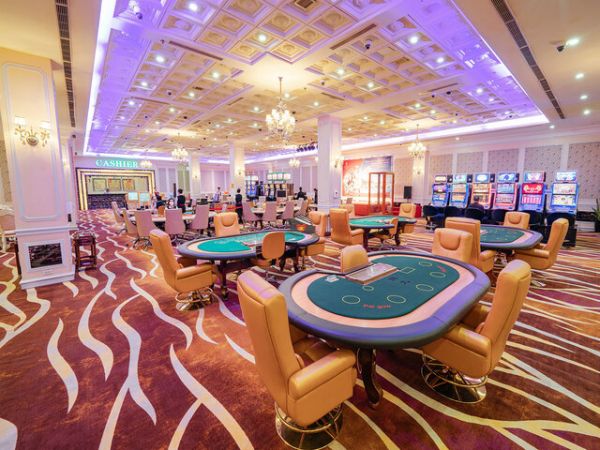MY SON SANCTUARY VIETNAM
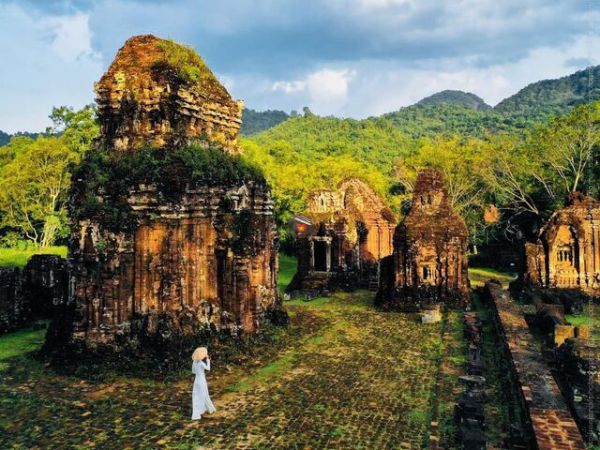
My Son Sanctuary Vietnam. In the middle south of modern-day Vietnam, a distinct civilization that traced its spiritual roots to Hinduism emerged between the fourth and thirteenth centuries. The ruins of many striking tower temples, situated in a striking location that served as the Champa Kingdom's governmental and religious center for the majority of its existence, provide a striking example of this.
The period of My Son Sanctuary is from the fourth to the thirteenth century CE. The property is situated in Quang Nam Province's hilly border district, Duy Xuyen District, in central Vietnam. It is located in a high-lying geological basin that serves as the watershed for the holy Thu Bon River and is encircled by mountains. Here is where the Thu Bon River rises, empties into the South China Sea at its mouth close to the old port city of Hoi An, and passes by the monuments, the basin, and the historic center of the Champa Kingdom. The locations' strategic importance stems from their position, which is also readily defendable.
The tower temples were built during ten centuries of uninterrupted expansion in the center of the Dua Clan's ancestral lands, which united the Cham clans and founded the Champapura kingdom (Sanskrit meaning "City of the Cham people") in 192 CE. This distinctive civilization, which flourished on the coast of modern-day Vietnam from the fourth to the thirteenth century CE, was spiritually derived from Hinduism practiced on the Indian subcontinent. A great deal of temples dedicated to Hindu deities like Vishnu and Krishna, but mostly Shiva, were constructed as a result of this influence. Shivite Hinduism continued to be the recognized official religion even though Mahayana Buddhism entered the Cham culture, most likely in the fourth century CE, and became well-established in the kingdom's north.
The most significant buildings of the My Son civilization are the monuments found in the sanctuary. The tower temples have an array of architectural designs that represent the magnificence and holiness of Mount Meru, the mythological holy mountain that is the abode of Hindu gods at the center of the universe. This mountainous homeland of the Cham people is now symbolically replicated on Earth. They are built of burned brick, have stone pillars supporting them, and are embellished with bas-reliefs made of sandstone that represent episodes from Hindu mythology. Cham technical prowess is demonstrated by their sophisticated technology, and the intricate symbolism and iconography of the tower temples shed light on the nature and development of Cham political and religious philosophy.

- There are no other monuments like these in Southeast Asia:
Criteria 1: The My Son Sanctuary is a remarkable illustration of cross-cultural fusion, where a native civilization has adapted to outside cultural influences, most notably the Indian subcontinent's Hindu art and architecture.
Criteria 2: The ruins of My Son serve as a striking example of the Champa Kingdom's significance in Southeast Asia's political and cultural history.
The My Son Sanctuary's Hindu tower temples are situated inside a fortified area with well-defined limits. Along with substantially buried archeology, eight groups of 71 extant monuments together illustrate the full historic sequence of tower temple buildings at the site, spanning the entire era of the Champa Kingdom's existence.
The My Son monuments were first conserved in the early 1900s CE, following their modern-day discovery by French archaeologists. Numerous tower temples suffered damage during World War II, the First Indo-China War, and particularly the Second Indo-China War. Nonetheless, conservation efforts have been made, and the surviving tower temples have been cared for and conserved.
Although extreme weather events like flooding and excessive humidity can still affect the site, their effects have been lessened by stream widening and the removal of adjacent vegetation. The potential presence of unidentified, unexploded ordnance within the property's buffer zone is still a persistent problem that has impacted archaeology research in recently discovered areas, restoration of eight monumental areas, and visitor presentation of the site.

Authenticity matters more than the perfection of the My Son Sanctuary Vietnam:
Historical research conducted in the late 19th and early 20th centuries by archaeologists, historians, and other academics has documented the significance of the site through its monuments, which are masterworks of the era's brick construction in terms of both technology and elaborately carved brick decorations.
Even though many of the monuments have sustained considerable deterioration over time, their original natural settings have been preserved by their position and the site's hallowed nature. Under the direction of French and Polish experts, very small conservation interventions have been made that have no impact on the site's overall authenticity. In terms of design, materials, craftsmanship, and environment, My Son's authenticity upholds its Excellent Holistically Value.
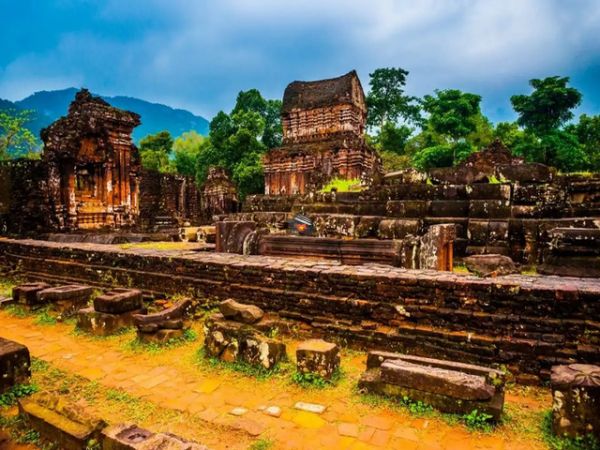
Requirements for management and protection of My Son Sanctuary:
The national government designated the property as a Special National site in 2009 after it was designated as a National Site by the Culture Ministry in 1979. The Cultural Heritage Law's requirements must be followed by all municipal and federal bodies (2001 revised 2009).
The Department of Preservation and Museology of the Ministry of Culture, Sports, and Tourism is ultimately in charge of overseeing the property's protection. The People's Committee of Duy Xuyen District, which formed the My Son Management Board of Relics and Tourism, has delegated this obligation to the Quang Nam Provincial Department of Culture, Sport, and Tourism. Both the General Plan for the Socio-Economic Development of Duy Xuyen District and the Nation Plan for the Development of Tourism take into consideration the unique demands of the historic assets.
As part of the ongoing UNESCO Asia-Pacific World Heritage site project for My Son, a strategy for revising the Conservation Master plan is being prepared. This approach ought to be incorporated into an updated Management Plan for the site. Following Vietnam's unification in 1975, conservation efforts resumed in earnest, and today, both national and foreign teams are working on the property to maintain it to a high quality.
Even though the Vietnamese government has been demining explosive ordnance at four major sites since 1975, the process is moving slowly, and there is still a lot more demining to be done. To better protect the property, the Vietnamese Prime Minister issued Decision 1915/ QĐ-TTg, which officially approved and provided financial backing for the site's Master Plan (2008–2020) aimed at promoting tourism and conservation.
To enable greater environmental protection of the property, the management of the adjacent wooded areas has to be enhanced. Future long-term management of the land should incorporate ongoing, thorough monitoring of these regions for the effects of extreme weather events. Managing the site's carrying capacity will become more crucial as a result of the marked growth in visitor numbers.
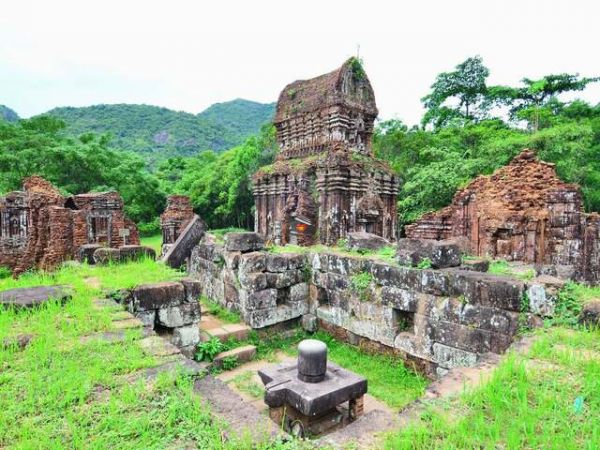
How To Get To My Son Sanctuary Vietnam?
Address: Duy Phu Village, Duy Xuyen District, Quang Nam Province
Opening hours: 06:30 am – 17:30 (every day, including holidays and Tet)
Entrance fee: 150,000 VND (including the fees to My Son Sanctuary and the Champa Museum). This price applies only to self-guided visits to My Son without any tour guide service. It includes a 2-kilometer-long electric car ride to My Son's center and art performing areas.
My Son is around 45 kilometers from Hoi An Ancient Town and 69 kilometers from Da Nang. Thus, you may go from both places to My Son, Vietnam.
1/ From Hoi An:
If you depart from Hoi An to My Son, there are three ways to get there:
By bike: It's easy to get to My Son on a scooter. From Hoi An, take Tran Hung Dao Street to Hung Vuong Street. After crossing Vinh Dien River, turn left onto Tran Quy Cap Street and continue straight until you reach Quang Trung Street. There will be signs directing you to My Son, and you will see other travelers driving along the way.
By bus: Some public buses run between Hoi An and My Son Sanctuary, but they don't stop at the gates, so it's not the most efficient way to get there. Instead, you can reserve a seat on a shuttle bus from Hoi An to My Son Sanctuary in advance, which departs at 8:30 am and returns at 1:45 pm. It costs as little as $8, making it a low-cost option, though entrance tickets must still be purchased.
By car: We would not recommend renting a car to visit My Son Sanctuary unless you are planning a multi-day trip through Central Vietnam. There are no car rental companies in Hoi An, so you must hire a car from Da Nang Airport. The car rental for a day costs around $100.
2/ From Da Nang:
There are two ways to depart from Da Nang to travel to My Son:
By bike or car: Follow National Highway 1 south to Nam Phuoc Town (for about 39 kilometers), then turn west on Route 537 for about 9 kilometers to Tra Kieu. When you reach the fork after going for 12 kilometers, turn left under the instruction sign board and continue for 9 kilometers to My Son. Continue on the mountain road for about 5 minutes after reaching My Son Sanctuary.
By bus: You can take bus number 06 from Da Nang to My Son. The bus runs every 30 minutes beginning at 5:30 a.m. to 5 p.m. daily. The bus fare ranges from 8,000 VND to 30,000 VND. Although it is less expensive, the bus takes longer than other modes of transportation.
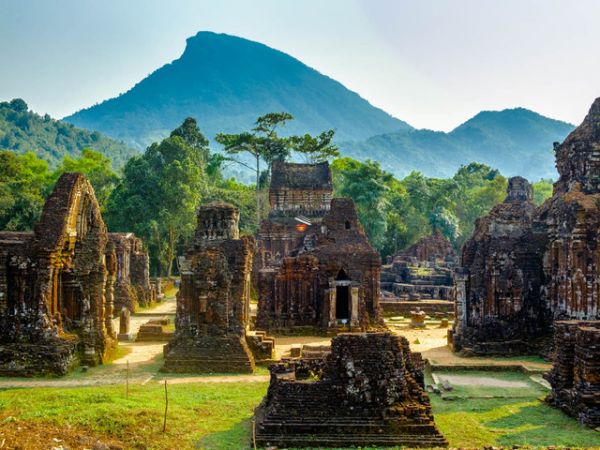
WhatsApp: +847-6666-0606
Email: info@friendlytravel.vn




